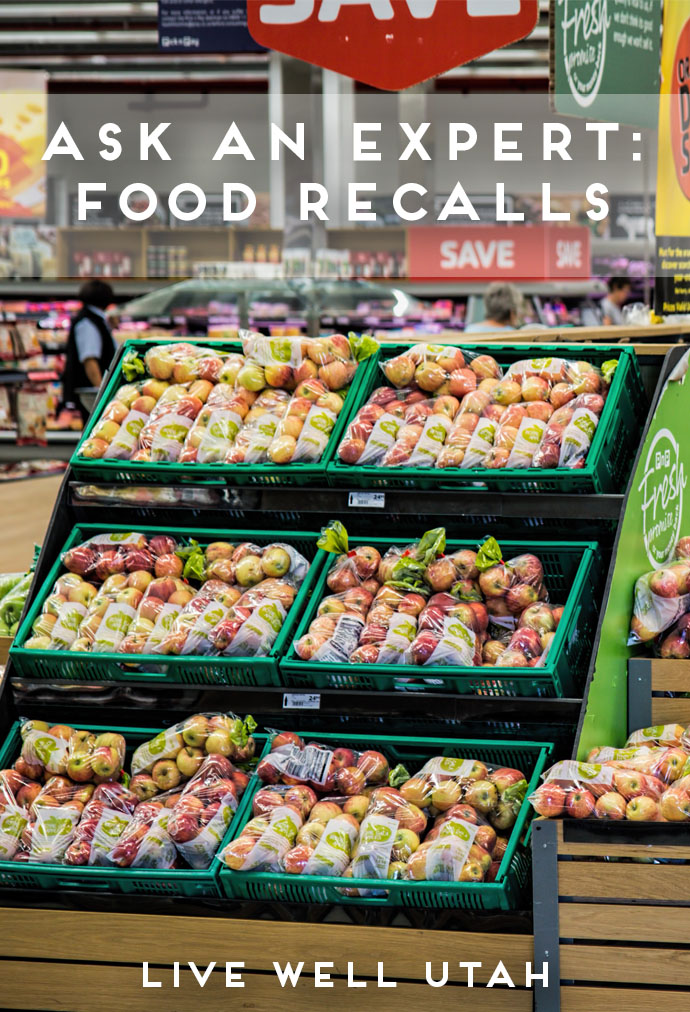Ask an Expert // Food Recalls
 What do you really need to know about food recalls? Find out what they really mean, what to do if you have a recalled product in your pantry or fridge, and how to keep your family safe from food-borne illnesses.
What do you really need to know about food recalls? Find out what they really mean, what to do if you have a recalled product in your pantry or fridge, and how to keep your family safe from food-borne illnesses.
Another recall hits the news: is any of the food we eat safe?
Not to worry! These recalls ensure our national food supply continues to be the safest in the world. To put it into perspective: There was a massive cheese recall in February of 2017, of cheeses made in a plant that tested positive for Listeria monocytogenes. The recall affected all cheeses produced in the plant from November 10, 2016, through February 9, 2017.
Roughly 3,640,000 pounds were recalled. However, nearly a BILLION pounds of cheese is produced in the United States per month. So, out of the 3 billion pounds of cheese produced during the same time period, only 0.1% (or, 0.001213) of the cheese was recalled.
Recalls occur for several reasons:
- Something is missing or incorrect on the label, such as an allergen alert.
- A manufacturer reports a problem they have found in their own product.
- Government inspections uncover contamination of some sort in a food product of a food processing facility.
- Someone reports a foodborne illness to the Centers for Disease Control (the CDC) that is then traced back to its source.
Our government takes food safety very seriously. Manufacturing plants have long lists of “Critical Control Points.” These are steps in the manufacturing process where a specified time and temperature must be regulated. They are checked frequently. Batches of foods are labeled for tracking, and records are kept as to what batches went where in the world and nation. Quality assurance scientists have chemical tests to run on each batch to ensure safe food. When a recall does occur, there are records that trace the entire physical pathway of the food product so the “bad” food can be found.
What can we do to be a savvy consumer in the face of these recalls?
Be aware of recalls. If it is something you typically purchase, check your pantry and throw away or return the product.
Practice basic, practical food safety: clean, separate, cook & chill.
- Clean: keep you, your food, and your kitchen clean.
- Separate: keep raw meats and poultry separate from ready-to-eat foods—in your grocery cart, on your counter preparing food, and in your refrigerator.
- Cook: cook food completely. The internal temperature for poultry and ground products is 165 F; whole cuts of meat and pork internal temperature should be 145 F.
- Chill: Keep foods out of the “danger zone” of 41 to 135 F. Bacteria develops rapidly when foods are left at normal room temperature longer than 2 hours. During the summer months in particular, don’t wait even an hour before getting things refrigerated!
So, what should you “recall” about food recalls? That we have government regulations protecting us, and companies doing their best to follow the law and ensure their product is safe!
By: Cathy A. Merrill, FCS Assistant Professor, USU Extension, Utah County
References:
Thielking, M. (2017, March 9). Why is so much cheese being recalled? Stat. Retrieved from: https://www.statnews.com/2017/03/09/cheese-recall-sargento-indiana/
Barry-Jester, A.M. (2016, April 12). The US produces about a billion pounds of cheese every month. The Digest. Retrieved from: https://fivethirtyeight.com/features/the-u-s-produces-about-a-billion-pounds-of-cheese-every-month/
White-Cason, J. (2013, August 12). Understanding Food Recalls: The Recall Process Explained. Food Safety News. Retrieved from: http://www.foodsafetynews.com/